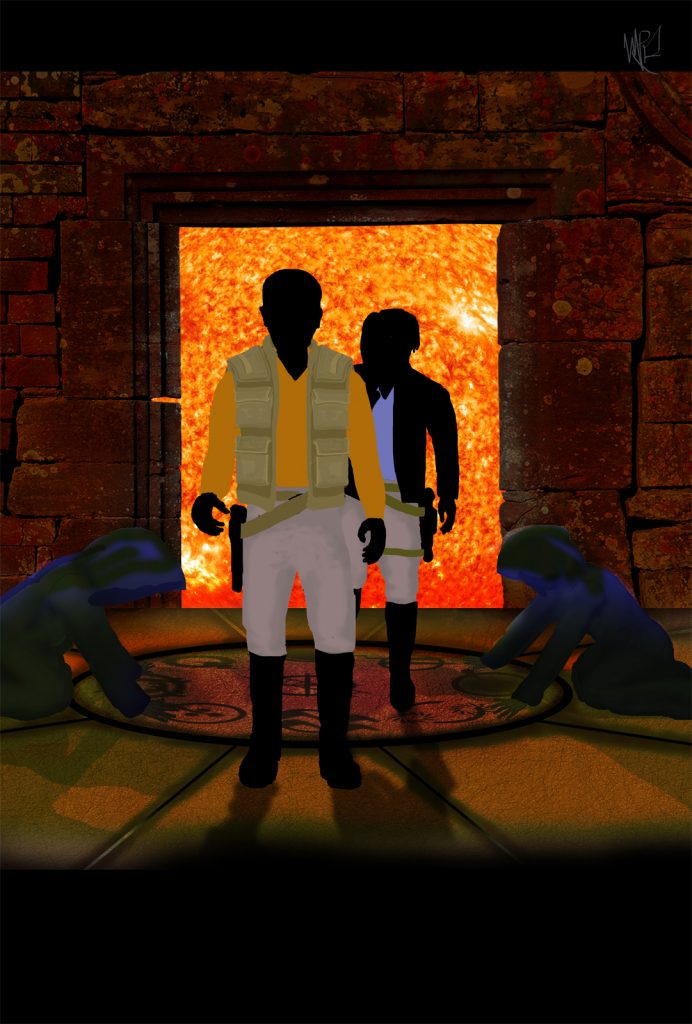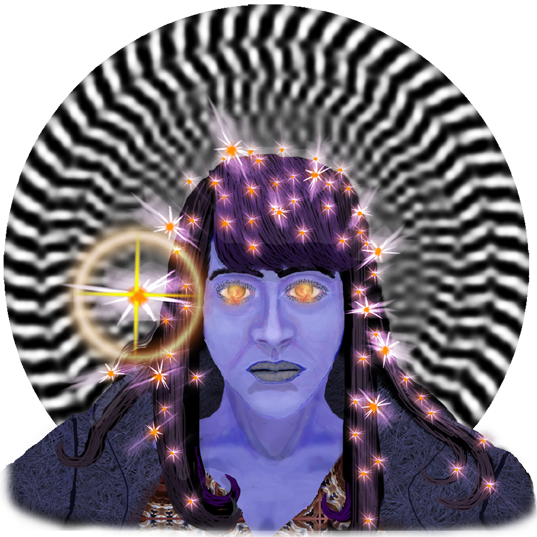Myths in the Experience, Part Two. The Guide in the Thicket
The Iron Goddess of Mercy and a Devotion to the Garden

I know a man with a green thumb. It seems whatever the weather his capabilities of tending to his plants have some magic to them. He’s had the same African violet growing in his home for thirty-five years and when he received a large store-bought orchid, for the first time I had seen, it rebloomed three years in a row. There is something to be said for steady devotion when tending to the most challenging tasks.

In Evah & the Unscrupulous Thwargg after Evah has been returned to her home planet for healing and empowerment, she is called by spirits in the Forest of Eshlam. Following their summons she discovers a sanctuary nearly entirely hidden by the passing of years. What was once clear and welcoming to members of the Naaheen Tribe was swallowed up by vines and other overgrowth. A charge is delivered to Evah by an apparition to prepare the sanctuary for use and in return she will receive a knowledge long forgotten. Indeed, her actions, and the mystery she is initiated into, bring a transform beyond anything she could have imagined. It is from thence she embarks on a journey from which there is no return.
The structure of this story is loosely based on a Chinese folktale about the Goddess of Mercy, bodhisattva of compassion. One day as a poor farmer walked along in the woods he discovered an iron statue of the bodhisattva of compassion and a temple in her honor. The temple was ruined with age and covered in overgrowth, unable to be entered. “What misfortune,” he thought, “for the poor to have no place to honor compassion.” He could not afford to rebuild the temple but instead he cleared it by hand then brought a broom and swept it clean. Lighting incense he said, “It is the least I can do.” He continued to do this; kept it free of danger, swept it clean, and lit incense. Then one day, in her radiance the Goddess of Mercy appeared to him. She told him of a rare and hidden cave and that he should go in search of the treasure which lay inside. “Take the treasure and share it with the people,” she told him. In the previously undiscovered cave, he found a camellia shoot which he took home to his farm and cultivated into a stunning plant that grew strong and flourished. From it he drew the leaves in their season and made a luxurious tea. He named it Tieguanyin, Iron Goddess of Mercy. The tea became renowned even through the years and beyond the village of the devoted man. Finally, the tea found its way into the court of the emperor where it was celebrated as was the land it came from. It became the national tea of trade.

I first learned this folktale visiting a recreation of a Qing Dynasty garden with a girlfriend in California. It was like walking back in time. There among the traditional architecture, lily ponds and freshly grown sprouts from three-thousand-year-old lotuses I was enchanted by that experience where myth and the ancient habitat converged. It was like the poetry of a fable was raising out of the earth to inform the light, the energy, the spirit of the place. There was a relationship that existed between the land and its ideas. These elements were wed in this otherworldly ancient environment suspended in time.
In the novel, the tribal traditions- the ideas that set it apart from the other cultures of the Spirean system, lay hidden in the overgrowth. A part of the land. The part of the land lost to the present variations of its people waiting to be rediscovered by a willing devotee. What will come of the ancient knowledge in the book is yet to be discovered, but thus far, one has entered and one has said yes to the call.
Longoria Wolfe





